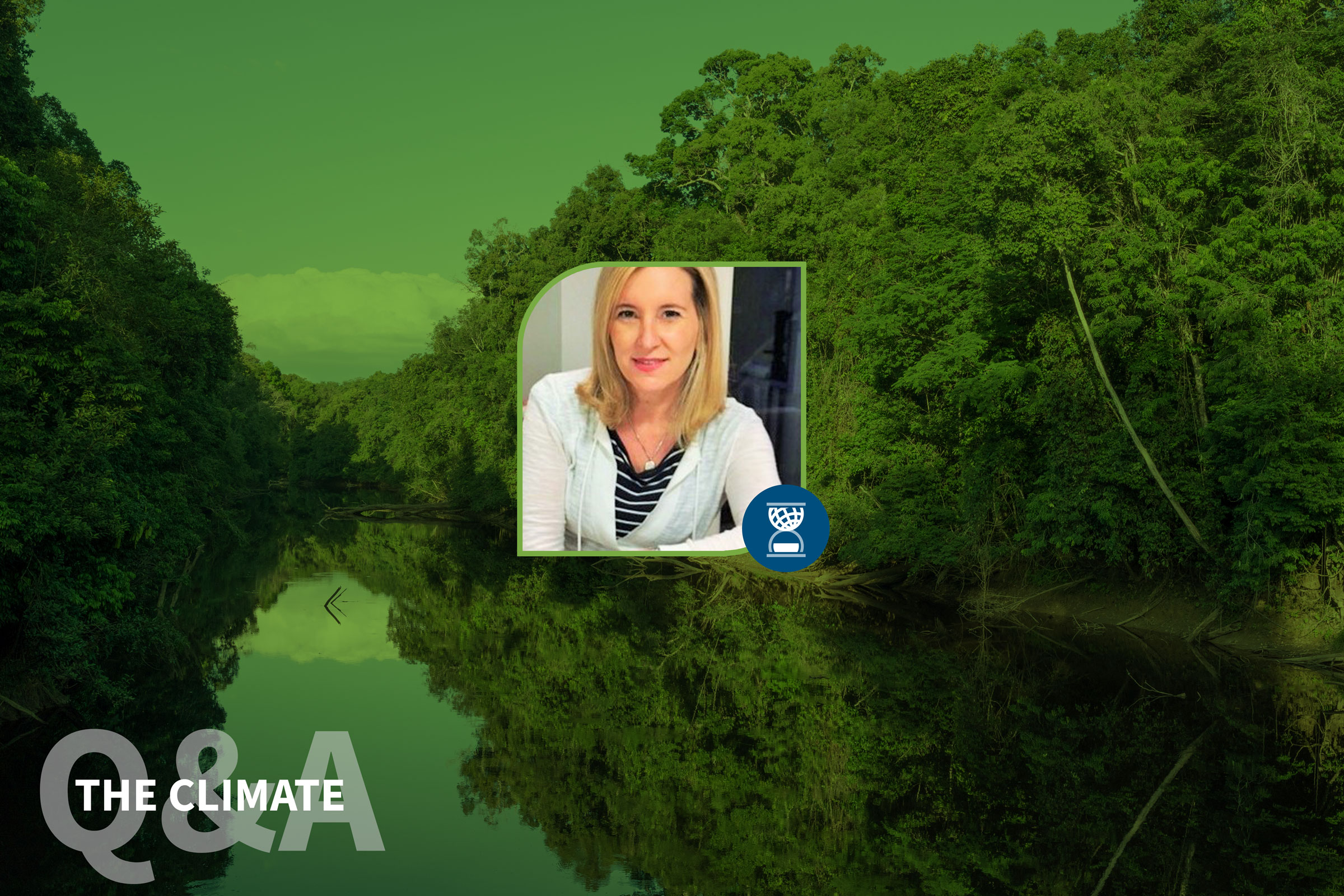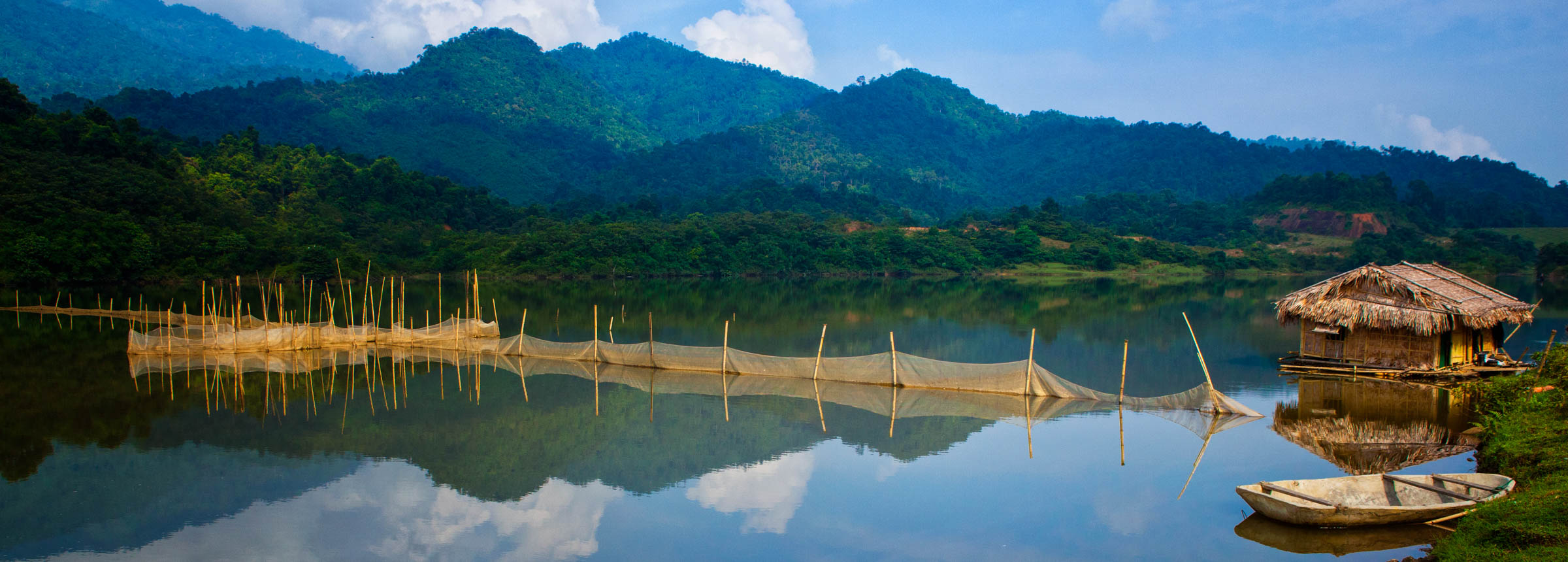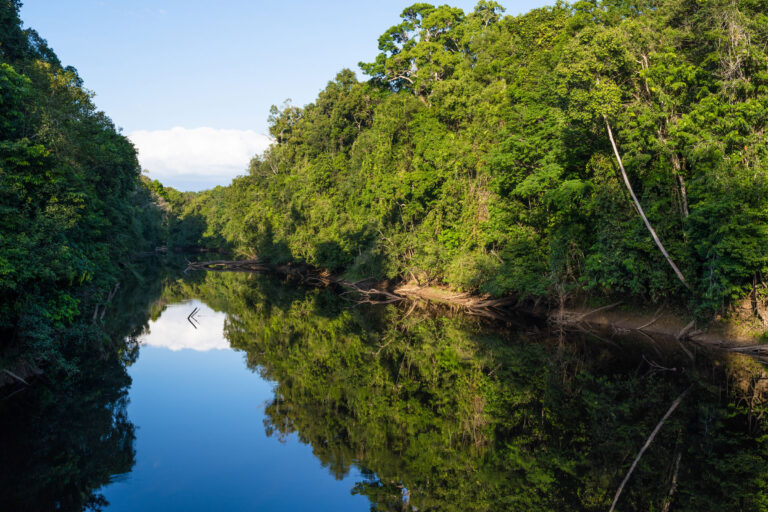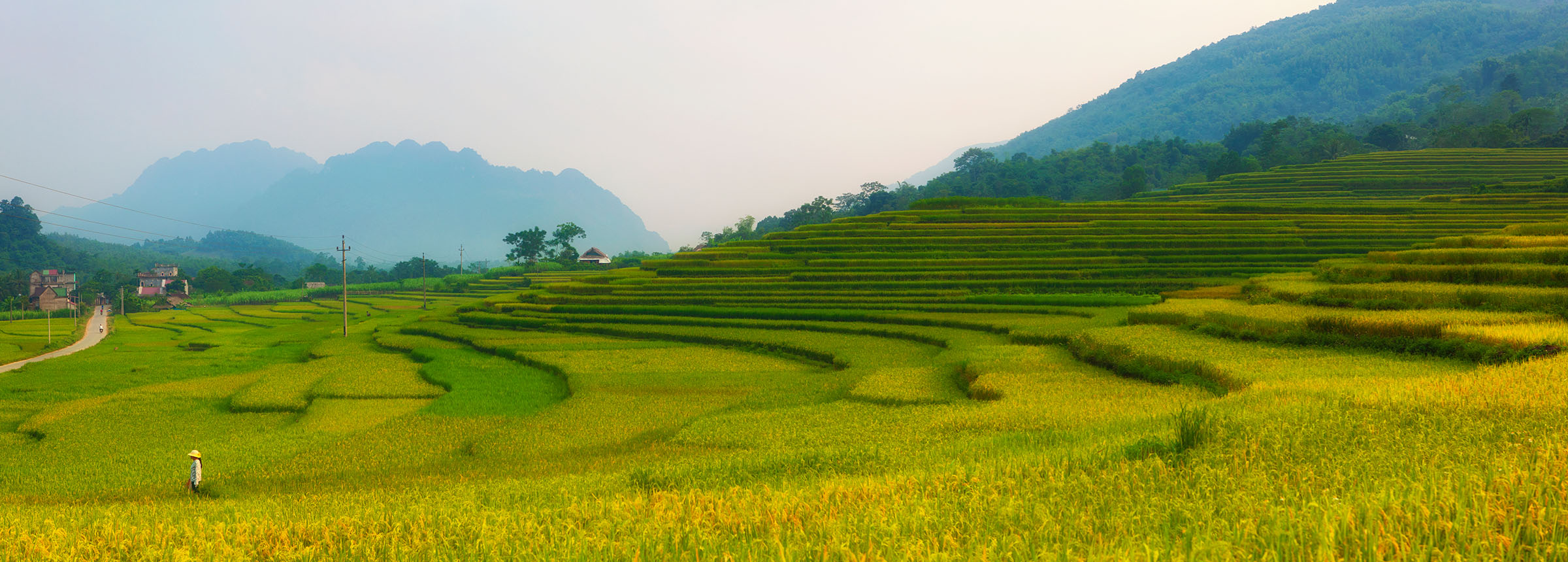
The Climate Q&A…
with Inga-Elisabeth Hawley, Senior Director, Environment and Energy Group, Winrock International
The U.S. has just reentered the Paris Agreement on climate change and a new presidential administration is prioritizing climate concerns like never before. Winrock International is doing what it always has done — protecting the earth and sustaining natural resources through numerous programs and approaches. This is the first in a series of interviews on climate with Winrock experts.
What are the chief goals for Winrock’s environment and energy work this year?
With the re-set of U.S. engagement on climate change, we’re at an exciting juncture both with the Environment and Energy (E2) group and more broadly across the organization. We anticipate significant opportunities to expand our mitigation work in land-use and low-emissions development. E2 sees an excellent opportunity to expand our work on peatland management and restoration, avoided deforestation and improved natural resource management, including coastal ecosystems. On the clean energy side we see significant and complementary opportunities in core technical areas, such as reducing greenhouse emissions, improving energy access and household energy, powering agriculture, and potentially expanding the portfolio to include reducing urban pollution. Winrock has unique holistic qualifications to address climate change, including carbon accounting, natural resource management, clean energy, climate-smart agriculture and also climate equity through our Human Rights, Education and Empowerment team, as we are likely to see an increase in human climate migration. The question is not where to start but where to stop — and that’s a great position to be in.
In looking at Winrock through climate adaptation and climate mitigation lenses, which would you say is strongest ?
Winrock is well-positioned in both. Winrock has focused on mitigation through a sustainable landscape, holistic approach, including our significant work on Reducing Deforestation and Forest Degradation (REDD+) and on clean technologies such as solar and water and cleaner cooking technologies. Our work in the adaptation space is exciting, too, focusing on strengthening climate resilience, reducing disaster risks and investing in adaptive approaches and technologies. The Private Enhancement for Increased Resilience (PIER) project is a great example of how adaptation work is expanding into private-sector partnerships and incentivizing private-sector investments that support national development objectives within countries of strategic interest to the U.S., thus helping unlock millions of dollars in investments for them. And then there’s the fact that natural resource management, clean energy interventions, emissions accounting and leveraging finance are critical for both mitigation and adaptation and are interlinked and complementary components of our climate change work. A holistic approach to climate change is necessary.
Trees are the lungs of the world, and Winrock has a deep bench in forestry. How has this strength grown and expanded into our current portfolio of avoided deforestation work?
We often think of Winrock’s agricultural origins, but forestry was at the forefront from the beginning, too. And our work in forestry continues to grow and expand. One example is the newly awarded ONE-SL project, a State Department-funded project that is developing an enhanced understanding and capacity for successful implementation of nested jurisdictional REDD+ programs. This is an incredibly technical project and an important one, supporting countries in their ability to scale work into jurisdictional REDD+ programs with the capacity to yield high-quality offsets in attracting private-sector commitment. I think another distinguisher for Winrock has been our work in Payment for Ecosystem Services or PES. A great example of this is the groundbreaking work on Payment for Forest Environmental Services (PFES) with the Vietnam Forests and Deltas project, which since 2012 has been helping the Government of Vietnam develop and operationalize a national PFES program that has directed over $500 million to forest owners as financial compensation for maintaining forest cover, that’s more than $130 million a year, which is quite impressive.

What are the priority regions of the world for Winrock in 2021? Are there countries or areas you would like to explore for future work or new tools to which you’d like to draw attention?
I think from E2’s perspective, because of its interesting composition — the Ecosystem Services, Clean Energy, and Forestry and Natural Resource Management teams — it’s a global portfolio with significant work in Latin American (through Ecosystem Services), Asia and sub-Saharan Africa across all three units, and a strong legacy in Europe through Clean Energy’s important work in both Georgia and Macedonia. E2 will continue to focus on these regions in 2021. We’re additionally seeing small island developing states as a focus area due to their unique climate change challenges, such as sea-level rise and storm surge. They are also a geography where we can expand our portfolio in Blue Carbon. Again Winrock’s approach to PFES in Vietnam is a great example, providing financing incentives to forest and watershed users who conserve their land with benefits extending to the household level. We’re also continuing to expand tool development, for example around carbon accounting, and have a potential future focus around carbon accounting in coastal ecosystems.
President Biden has just rejoined the Paris Climate Accords and promises to head a more climate-work-friendly administration. How will this affect Winrock’s current projects and potential new business? How will we position ourselves for this new work?
We’re anticipating a complete re-set on U.S. engagement in climate change and it’s going to have significant leveraging effects, including from other bilaterals, multilaterals and developing countries, all working to achieve a common goal and meet their national development commitments. It’s also interesting to see the holistic approach that the Biden Administration is taking, elevating climate change across every agency within the U.S. government. I’m hopeful and I see early signs that there will be increased collaboration across agencies on climate change. We’re already beginning to see signs of that, most notably between USAID and the State Department, so I’m hoping that that approach will continue. I think with our current climate change portfolio, both with USAID and State Department work, this will be an important point of leveraging efforts.
Tell us a little about yourself and how you became interested in this field. Why is this work important to you?
I was raised in northern California and spent a significant part of my childhood in Norway, which are two spectacularly beautiful natural environments. Being surrounded by nature throughout my childhood shaped my worldview; the environment was coded into my DNA early on. I was also fortunate to have had the opportunity to travel extensively with my parents from a very young age. The more remote the better: the first time I saw snow was in the Gulmarg Wildlife Sanctuary in Kashmir. My first job after university was as a legislative aide on Capitol Hill. One of the most onerous and time-consuming tasks, the thing that every staff member dreaded, was responding to constituent mail, so I bartered with senior staff members to let me attend the environmental and international affairs briefings and I, in return, wrote constituent response letters. How those pieces — a love of the natural world and an intellectual curiosity about the environment — actually came together is a long and winding story, but it got me to the right destination. I think some of the happiest moments in my life have been while I was overseas working with teams on the ground. Not to generalize, but I’ve found a tremendous sense of community in those developing countries in which I’ve spent significant time, including Liberia and Cambodia. I find that sometimes we miss that in Western society. I’ve worked with a spectacular cadre of professionals around the world to improve livelihoods and resilience while conserving the natural resource base. I can’t imagine being in any other profession. I think it is rare that one’s profession is doing what one loves. I’m extremely fortunate.
What is the most important thing we can do to combat climate change?
Greenhouse gas emissions are the leading driver of climate change. The United States is the second-largest emitter, behind only China. It is impossible to combat climate change without squarely taking on greenhouse gas emissions, which is an extremely daunting but critical measure. With the United States’ re-entry into the Paris Climate Accord, there is a significant and time-bound opportunity for the United States and other developed and developing countries to rally together to face the greatest challenge of our generation and future generations. Clean energy technologies such as wind and solar have dropped in price dramatically. We must collectively invest in and employ long-term, comprehensive low-emission development strategies (LEDS) coupled with meaningful mitigation measures that reduce, but more importantly, avoid GHG emissions. We are facing a climate crisis and can no longer nibble around the edges of this threat. Winrock is uniquely positioned to respond to this pre-eminent issue of the 21st century and do so in a meaningful way — with equity at the forefront that drives our climate decision-making.
Related Projects

Vietnam Forests and Deltas (VFD)
The USAID Vietnam Forests and Deltas Program supports Vietnam’s transition to resilient, sustainable development. The first phase of the program (2012-2018) helped put national policies and strategies into practice to respond to environmental change, with a focus on the forestry and agriculture sectors, disaster risk reduction, and strengthening livelihoods. Beginning in 2018, the program’s second […]
Offset National Emissions through Sustainable Landscapes (ONE-SL)
As businesses strive to achieve a carbon neutral footprint and demand for carbon offsets increases, developing countries are seeking new ways to finance efforts to reduce emissions, including from forest land use. The Offset National Emissions through Sustainable Landscapes (ONE-SL) project aims to develop enhanced understanding and capacity for successful implementation of nested jurisdictional Reducing […]
